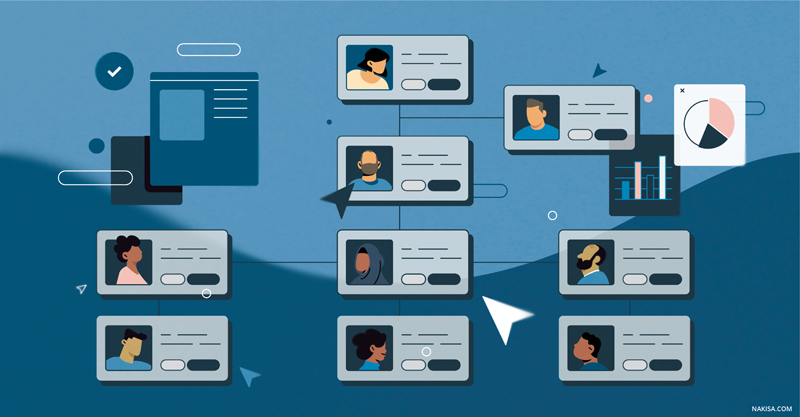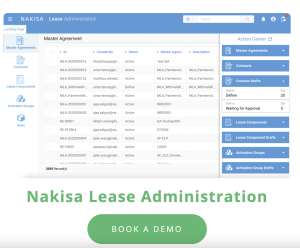Writer: Girish Thakur
Span of control is a dimension of organizational design measured by the number of subordinates that report directly to a given manager. During a reorg, this concept directly impacts the dynamic of the organization, including speed of communication flow, employee motivation, reporting relationships, and administrative overhead. In turn, span of control is affected by factors such as job complexity, similarity of subordinate jobs, and the abilities of both employees and the manager. Span of control is more important of a consideration when it comes to vertical coordination because it has a direct impact on the degree to which managers can interact with and supervise subordinates.
Changing managers’ span of control without aligning with the organization’s strategic goals can bring about negative consequences. If the span of control is too wide, it can lead to lower employee engagement and affect the company’s top and bottom lines. Conversely, if the span of control is too narrow, it may add more layers in the organizational structure which can slow down communication and decision making, causing the organization to become less efficient and less productive.
What is the ideal span of control?
Span of control, responsibility and wages are intrinsically related. Research on European and US firms found that managers who supervise more subordinates earn higher wages. Span of control increases are often used as a tactical lever to address a cost savings mandate; however, they should be used as strategic levers during an organizational redesign. There is no magic number for determining the ideal span of control in an organization. Peak organizational performance is a function of leadership reporting arrangements as well as workplace culture. The efficiency and effectiveness of a company’s existing organizational structure also plays a key role. To identify ideal spans of control and layers for their organization, HR leaders should analyze whether the organization’s management layers are sufficiently optimized to facilitate effective managerial control and faster decision making, and they should also analyze whether the organizational design clearly articulates.
Span of control best practices
Use a Weighted Decision Matrix
HR leaders can use the Weighted Decision Matrix method to objectively determine an ideal span of control. It’s a powerful quantitative technique to evaluate a set of criteria, while taking their differing levels of importance into account, to produce a score that helps you make a balanced decision. Some of the best practices when it comes to creating a Weighted Decision Matrix are:
- collaboration between key decision makers to determine its core criteria, scope and use
- criteria identified in the matrix should adhere to the concept of MECE (Mutually Exclusive, Collectively Exhaustive), i.e., ascribed weights should change for different types of managerial positions to accurately reflect their importance.
Avoid redesign shortcuts
Large, complex organizations tend to add new positions in the existing layers of the organizational structure instead of undertaking a formal redesign process, which tends to produce steep hierarchal pyramid. A high number of organizational layers coupled with managers who have very few direct reports produces several organizational effectiveness issues, including slower decision making and coordination difficulties. This often leads to increased spans of control tied to objectives such as cost savings, and rebalancing levels in an organization to improve overall responsiveness and effectiveness. Situations like these are great opportunities for HR leaders to align on their company’s strategic objectives and use span of control as a strategic lever in a formal redesign process where factors such as leadership style, the need for cross-unit coordination, and the norms for decision making are also given equal importance.
Don’t forget about span of accountability
Modern networked organizations are made up of a mix of cross functional teams, often with employees having one or more dotted reporting lines to a leader. In such matrix organizational structures, HR leaders should also consider span of accountability on top of span of control. Span of control deals with the resources available to a manager, whereas span of accountability refers to the range of tradeoffs affecting the measures used to evaluate a manager’s achievements. In high-performing organizations, many people are held to broad performance standards such as brand profit and customer satisfaction, even though they do not control all the resources needed to achieve desired results. HR leaders should also closely monitor key positions in an organizational structure where span of control is narrow, but the span of accountability is wide. Empirical evidence from field research and surveys suggests that there are pros and cons when these two spans are not aligned. Increased entrepreneurial spirit amongst managers, rapid innovation, and robust market competitiveness are among the pros, while cons include increased employee frustration and turnover.
Redesign projects require multi-pronged efforts
A survey conducted by a leading consulting company indicates that a successful redesign requires company leaders to be aligned on strategic objectives, identification of necessary employee mindset changes before the redesign process begins, clear criteria for the new organizational design, and constant communication from senior leaders to support the change story. Findings from this survey also indicate that span of control is just one of the organizational elements which resulted in meaningful improvement after a successful redesign. Other elements such as performance management, business processes, roles, decision rights and reporting lines also resulted in an improvement. Indeed, optimizing span of control is one of many objectives HR leaders should consider when executing a redesign.
Nakisa Hanelly can help you stay on top of it, with in-chart span of control analytics and a dedicated report. Contact us to learn more.







